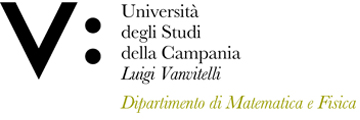Lucio GIALANELLA
Insegnamento di NUCLEAR ASTROPHYSICS
Corso di laurea magistrale in PHYSICS
SSD: FIS/04
CFU: 6,00
ORE PER UNITÀ DIDATTICA: 48,00
Periodo di Erogazione: Primo Semestre
Italiano
| Lingua di insegnamento | INGLESE |
| Contenuti | Lo studente acquisirà familiarità e conoscenza con argomenti concernenti: l’astrofisica nucleare, le reazioni nucleari, le tecniche di misura. |
| Testi di riferimento | Nuclear Physics of Stars. Cristian iliadis. Vch Verlagsgesellschaft Mbh. |
| Obiettivi formativi | Lo studente acquisirà familiarità e conoscenza con argomenti concernenti lo studio delle reazioni nucleari di bassa energia e del loro ruolo nell’ambito dell’astrofisica. Ponendo basi alla futuro approfondimento dell’astrofisica nucleare teorica o sperimentale. |
| Prerequisiti | Conoscenze di base della fisica nucleare e delle teorie dell’evoluzione stellare. |
| Metodologie didattiche | La somministrazione del corso avverrà attraverso un blocco di lezioni teoriche intervallate da esercitazioni numeriche in aula e quantificabile in 6 CFU. |
| Metodi di valutazione | Le modalità di verifica dell’apprendimento comprendono la presentazione di un elaborato finale e un esame orale. |
| Altre informazioni | La frequenza è raccomandata, ma non obbligatoria |
| Programma del corso | 1 - Introduzione. |
English
| Teaching language | ENGLISH |
| Contents | The student will acquire familiarity and knowledge with topics concerning: nuclear reaction, nuclear atrophysics, measurements technique. |
| Textbook and course materials | Nuclear Physics of Stars. Cristian iliadis. Vch Verlagsgesellschaft Mbh. |
| Course objectives | The student will acquire familiarity and knowledge with topics concerning the low energy nuclear reactions and of their importance in the stellar evolution models. The knowledge acquired will be the basis for future study in the experimental or theoretical nuclear astrophysics. |
| Prerequisites | Knowledge of the fundamental principles of nuclear physics and stellar evolution. |
| Teaching methods | The course will be administered through a block of theoretical lessons and numerical applications quantifiable in 6 CFU. |
| Evaluation methods | The methods for verifying learning include a final project presentation and oral part. |
| Other information | Attendance is recommended, but not mandatory |
| Course Syllabus | 1 - Introduction. |








